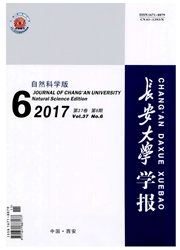

 中文摘要:
中文摘要:
为了解客运换乘枢纽旅客交通方式选择分担率,对换乘枢纽旅客交通方式选择影响因素进行分析,认为交通方式选择是道路交通网络基础特性、公共交通配套设施布局特性等客观因素以及旅客出行特性、旅客偏好等主观因素相互作用直至均衡的过程。依据效用最大化理论,在交通方式选择行为模型的基础上,引入感知和态度2个心理变量,构建了随机效用函数模型,并对模型求解。选取某换乘枢纽站的3种交通方式为调查对象,抽样调查了各交通方式的属性值,量化分析了各因素对交通方式选择作用的大小,对各交通方式的分担率进行了计算。研究结果表明:效用最大化能很好地反映旅客在选择交通方式时的决策过程,从旅客的个体出发,综合考虑旅客个体行为能较为客观地计算出不同交通方式的分担量,模型具有较好的实用性。
 英文摘要:
英文摘要:
To understand the split model characteristics of urban comprehensive passenger hub, this paper analyzed the influence factors of the passenger traffic way choice at urban comprehen- sive passenger hub. It was found that the passenger traffic way choice was a progress during which, before reaching a balance, interactions continued between external factors of characteris- tics of road networks and routes, and internal factors of travelers. According to the maximum u- tility theory and based on the passenger traffic way choice, this paper set up multinomial logit model, which takes perception and attitude as two indexes. Based on the data surveyed at one comprehensive passenger hub, this paper quantitatively analyzed the impacts of influence factors on passenger traffic way choice and the split rate of each traffic way was calculated. The results show that the maximum utility can reflect the decision making in passenger traffic way choice. With passenger's individual behavior considered, the split rate of each traffic way can be calculat- ed. The model is of practical significance.
 同期刊论文项目
同期刊论文项目
 同项目期刊论文
同项目期刊论文
 期刊信息
期刊信息
